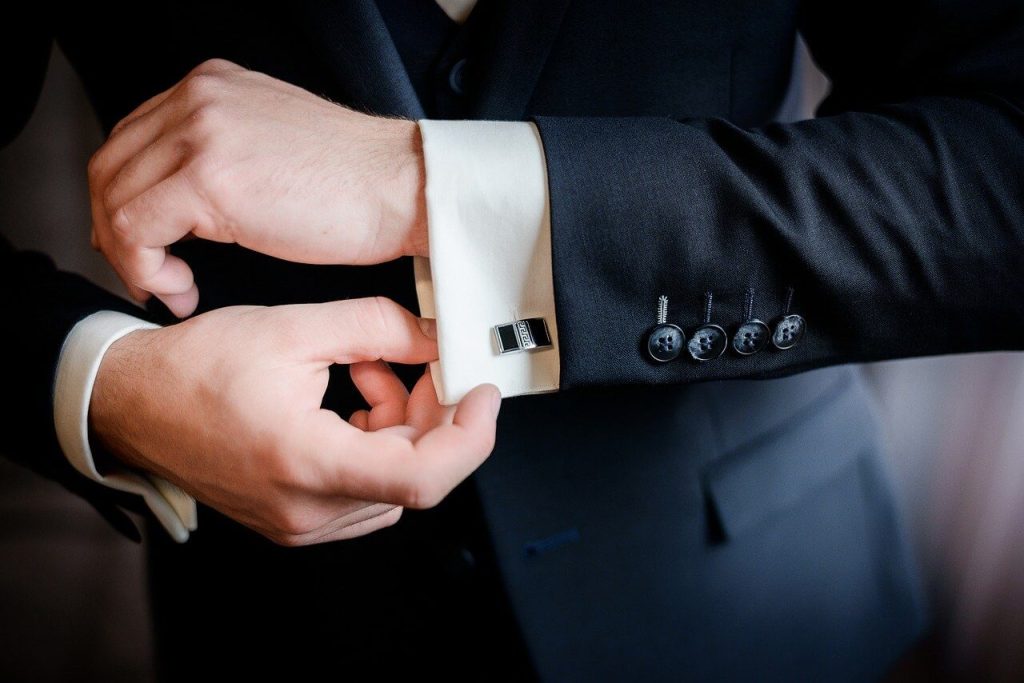Bebimi – In an era of casual Fridays and remote work, one might wonder about the relevance of formal accessories. Yet against all odds, the cufflink is experiencing a remarkable renaissance. These small pieces of metal and precious materials have journeyed through centuries, evolving from practical necessities to powerful style statements. The modern revival of cufflinks represents more than just a fashion trend it’s a cultural shift toward personalized elegance and intentional dressing. Today’s designers are reimagining this classic accessory with bold creativity, blending traditional craftsmanship with contemporary aesthetics to create pieces that speak volumes about the wearer’s personality and attention to detail.
The Ancient Origins and Evolution

The story of cufflinks begins long before the term itself entered our vocabulary. Early precursors appeared in ancient civilizations where functional needs met decorative aspirations.
Early Fastening Systems
Before the modern cufflink emerged, people used various methods to secure their sleeves:
Renaissance nobles used silk ribbons and fabric ties to fasten shirt cuffs
Seventeenth-century gentlemen favored jeweled buttons connected by small chains
Eighteenth-century fashion introduced stud-like devices with toggle closures
Victorian era brought enameled designs with intricate pictorial scenes
Industrial Revolution made mass production of decorative fasteners possible
The Golden Age of Cufflinks
The period between 1920 and 1960 marked the peak of cufflink popularity and innovation. Several factors contributed to this golden era:
Art Deco movement inspired geometric patterns and bold color combinations
Hollywood icons like Cary Grant made cufflinks essential to red carpet style
Development of new manufacturing techniques allowed for intricate designs
Rise of business culture established cufflinks as corporate power symbols
Increased travel created demand for souvenir and commemorative pieces
The Decline and Subsequent Resurgence
Understanding why cufflinks fell from grace helps explain their powerful comeback in contemporary fashion.
Factors Behind the Fading Popularth
Several social and fashion shifts contributed to the temporary decline of cufflinks:
The 1970s counterculture movement rejected formal dressing conventions
Mass production of shirts with button cuffs made them more accessible
Business casual trends eliminated need for traditional formal accessories
Younger generations associated cufflinks with outdated dress codes
Economic factors made expensive accessories seem unnecessary
The Modern Renaissance
The recent revival of cufflinks represents a fascinating case study in fashion cycles and cultural shifts:
Millennials and Gen Z discovered vintage cufflinks as unique statement pieces
Social media platforms allowed collectors to share and trade rare finds
Designers began incorporating technology and unconventional materials
Sustainable fashion movements favored durable accessories over fast fashion
Personal branding trends made distinctive accessories more valuable
Contemporary Interpretations and Innovations
Today’s cufflink designers are pushing boundaries while respecting traditional craftsmanship.
Material Revolution
Modern cufflinks feature an exciting array of non-traditional materials:
Carbon fiber and titanium for lightweight durability
Recycled glass and ocean plastic supporting sustainability
Wood inlays and resin creations offering organic textures
3D printed metals enabling impossible geometric forms
LED-embedded designs for evening wear impact
Design Innovations
Contemporary designers are rethinking every aspect of cufflink design:
Magnetic closures replacing traditional toggle systems
Interchangeable faces allowing multiple looks from one base
Minimalist designs appealing to modern aesthetic preferences
Oversized statement pieces challenging traditional proportions
Custom engraving services creating personal heirlooms
The New Rules of Wearing Cufflinks
Modern cufflink etiquette balances tradition with personal expression.
Contemporary Styling Guidelines
Today’s fashion rules encourage creative cufflink expression:
Mix metals rather than sticking to one tone
Pair formal cufflinks with casual outfits for unexpected contrast
Choose thematic designs that reflect personal interests
Consider sleeve length when selecting cufflink size
Coordinate with other accessories without perfect matching
Occasion-Specific Recommendations
Different situations call for varying approaches to cufflink selection:
Business settings favor subtle luxury and traditional shapes
Evening events allow for dramatic stones and innovative designs
Weddings present opportunities for sentimental and custom pieces
Creative industries welcome humorous and conversation-starting options
Black tie events maintain classic elegance with modern twists
The Future of Cufflinks in Fashion
The trajectory of cufflinks points toward continued innovation and relevance.
Emerging Trends
Several developments suggest where cufflink design is heading:
Smart cufflinks incorporating technology while maintaining elegance
Artisanal collaborations between major brands and independent makers
Gender-fluid designs moving beyond traditional masculine aesthetics
Modular systems allowing wearers to create custom combinations
Heritage brands reintroducing archival designs with contemporary updates
Cultural Significance
The enduring appeal of cufflinks speaks to deeper cultural values:
In an increasingly digital world, tangible luxury items gain importance
The slow fashion movement aligns with quality accessory investment
Personalization trends favor unique items over mass production
The storytelling aspect of heirloom pieces resonates with modern consumers
The physical experience of dressing with intention provides mindful moments

